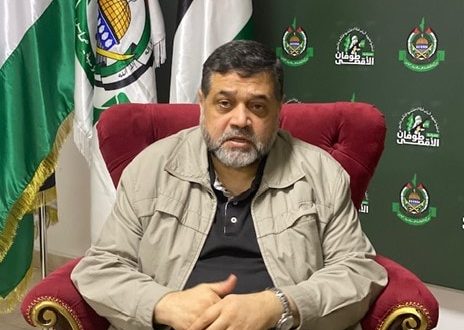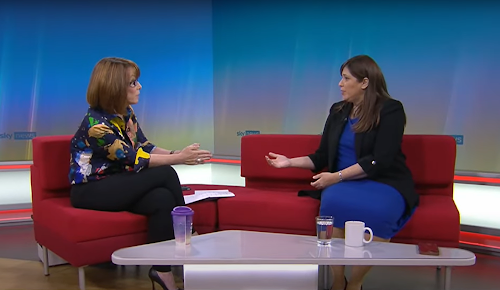Last summer I wrote:
Every war is in part a propaganda war, with each side trying to influence their own people, the people on the other side, and global opinion. In the current war between Hezbollah and Israel, efforts to persuade the outside world have been particularly intense.
A large part of the propaganda war is to portray the suffering of one’s own civilians in the most dire and dramatic light. As George Orwell– a wartime BBC propagandist himself– wrote in 1944, “[I]t is only in propaganda pamphlets that every bomb drops on a school or an orphanage.” But while Israel, unlike Hezbollah, is not directly targeting civilians, the suffering in war-torn areas of Lebanon is real enough.
…Obviously Lebanese authorities and Hezbollah officials are pleased to provide easy access for journalists to the areas of worst suffering. (I suppose if the same journalists tried to track down Hezbollah missile storage sites, underground bunkers or kidnapped Israeli soldiers, the results would be much different.)
Israel of course fights the propaganda war too, though often in a puzzlingly inept way…
Now Marvin Kalb, a former correspondent for CBS News, and Carol Saivetz of Harvard have produced a paper (pdf) examining the role of the media (willingly or otherwise) as a weapon in that war.
Anyone who works as a journalist or who closely followed the coverage of the war ought to read the whole thing. But here are a few segments worth highlighting:
If we are to collect lessons from this war, one of them would have to be that a closed society can control the image and the message that it wishes to convey to the rest of the world far more effectively than can an open society, especially one engaged in an existential struggle for survival. An open society becomes the victim of its own openness. During the war, no Hezbollah secrets were disclosed, but in Israel secrets were leaked, rumors spread like wildfire, leaders felt obliged to issue hortatory appeals often based on incomplete knowledge, and journalists were driven by the fire of competition to publish and broadcast unsubstantiated information. A closed society conveys the impression of order and discipline; an open society, buffeted by the crosswinds of reality and rumor, criticism and revelation, conveys the impression of disorder, chaos and uncertainty, but this impression can be misleading.
It was hardly an accident that Hezbollah, in this circumstance, projected a very special narrative for the world beyond its ken—a narrative that depicted a selfless movement touched by God and blessed by a religious fervor and determination to resist the enemy, the infidel, and ultimately achieve a “divine victory,” no matter the cost in life and treasure. The narrative contained no mention of Hezbollah’s dependence upon Iran and Syria for a steady flow of arms and financial resources.
…..
Hezbollah, whenever possible, pointed reporters to civilian deaths among Lebanese, a helpful gesture with heavy propaganda implications. Early in the war, reporters routinely noted that Hezbollah had started the war, and its casualties were a logical consequence of war. But after the first week such references were either dropped or downplayed, leaving the widespread impression that Israel was a loose cannon shooting at anything that moved. “Disproportionality” became the war’s mantra; even if Israel did not start the war, so the argument went, it responded to Hezbollah’s opening raid with a disproportionate display of military strength, wrecking Lebanon’s economy, destroying its infrastructure, inflaming political passions and killing civilians with reckless abandon. “And for what?” Lebanese asked. “For eight soldiers?” Rarely in the coverage was there “proportionate” mention of Israeli civilian deaths suffered during Hezbollah’s sustained rocket attacks.
…Once, Hezbollah conducted a media tour of a southern suburb of Beirut inhabited by Shiite supporters whose homes and apartments had been badly damaged during Israeli air strikes. The point was to again use the media as a weapon in the propaganda war for public approval, and the media did not mind being used, though they were forced to pay a price. Foreign correspondents were warned, on entry to the tour, that they could not wander off on their own or ask questions of any of the residents. They could only take pictures of sites approved by their Hezbollah minders. Violations, they were told, would be treated harshly. Cameras would be confiscated, film or tape destroyed, and offending reporters would never again be allowed access to Hezbollah officials or Hezbollah-controlled areas.
…The cameramen didn’t need Hezbollah’s permission to film the devastation, but if in the wreckage they saw young men with guns, they were warned not to take pictures of these Hezbollah fighters, else their cameras would be confiscated and they might run into trouble returning to Beirut—an indirect warning, which most reporters took seriously… Throughout the conflict, the rarest picture of all was that of a Hezbollah guerrilla. It was as if the war on the Hezbollah side was being fought by ghosts.
…
Not so, on the Israeli side of the war, where officials made a clumsy effort to control and contain the coverage but essentially failed. Hour after hour, day after day, newspapermen and anchormen found many ways to avoid Israeli censorship or obstruction—and cover the war, which was their job… Jonathan Finer, a reporter for The Washington Post, had no trouble interviewing, by his count, two dozen Israeli soldiers “at army bases, hotels, artillery batteries and staging points for their entry into Lebanon since the heaviest ground fighting began last week.”… As waves of Israeli armor moved into southern Lebanon, people everywhere, presumably including Hezbollah, could see on their screens what was happening. This was after all a war being carried live to every TV set and computer in the world.
…Walid Omary, Jerusalem bureau chief for Al-Jazeera, described how Israeli police followed his television crews and accused them of “giving information to the enemy,” and yet he deployed three television crews to Al-Jazeera’s daily coverage of the Israeli side of the war—“one in Haifa and one on the border and a third in Jerusalem.”
…..
Rarely did the media use photographs to show that Hezbollah fired its weapons from residential neighborhoods in clear violation of international law. This was rare, because Hezbollah did not allow reporters to film such military activity. Yet, on July 30, the Sunday Herald Sun in Australia did just that. 60 It published photos that, in its own words, “damn Hezbollah” for conducting military operations in populated suburbs. In one photo of a “high density residential area,” Hezbollah was shown preparing launch pads for “rockets and heavy-caliber weapons.” In another men were firing an anti-aircraft gun “meters from an apartment block” where laundry was drying on a balcony. The newspaper said that the photos were “exclusive,” shot by a “visiting journalist and smuggled out by a friend.” The photos had to be smuggled out of Beirut, because Hezbollah would never have allowed them to be shot—they proved that Hezbollah was in fact conducting military operations from heavily populated Beirut suburbs, which was considered a war crime.
…..
Balancing photographs for fairness may be one of the most difficult jobs in contemporary journalism, assuming a professional desire to be responsible. “Photos are trickier than words,” said Bill Keller, executive editor of The New York Times, “because their content is in large measure emotional, visceral.” Unless photos are doctored, “you can’t edit their content. You can’t insert a ‘to be sure’ paragraph in a photo.”
…This was a live war, in which the information battlefield played a central role. Here the Israelis suffered from the openness of their democratic society. They succumbed to the public pressures of live 24/7 coverage. They couldn’t keep a secret. Hezbollah, on the other hand, controlled its message with an iron grip. It had one spokesman and no leaks…
…..
During the Lebanon War, for example, the bloggers had more influence over the flow of the story than they had had during any other war. Ravi Nessman, the senior Jerusalem correspondent of the Associated Press, thought the influence of the bloggers, especially in the United States, was “unprecedented.” When the bloggers [in the U.S.] discovered that photographs had been doctored, “the credibility of the bloggers…skyrocketed and our credibility plummeted.” Nessman added, “After that everything that we did was suspect. And that makes it very difficult to cover a war, to have honest people who are trying, who are not doctoring photographs, who are not taking one side or the other, but who are trying to present the truth of what is going on there, and have everything we say be examined, which is fair, but basically be questioned as a lie, and starting with that premise that the media is lying.”
(Hat tip: Judeosphere.)


